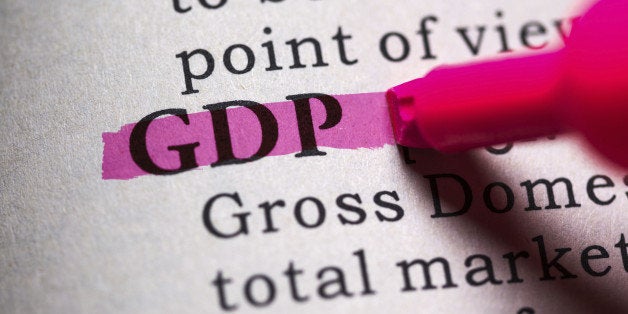
By Likki-Lee Pitzen, GWS Global Warning System and member of the St. Gallen Symposium's global Leaders of Tomorrow community
We all know 2015 is the year the UN will formally announce the 17 Sustainable Development Goals (SDG). For the first time, the SDGs include climate change mitigation and environmental sustainability as goals for all countries. Great! So governments and businesses finally taking the Intergovernmental Panel on Climate Change (IPCC) reports serious means our world economy will grow sustainably and all will be good, right? Oh, no, no. The SDGs are a good way to start. But what really threatens the prospect of a sustainable future is the way we look at economic growth and the reasons why we see it as a sacrosanct panacea. Economic textbooks teach us to measure growth, the rise in the quantity of goods and services, through GDP, the monetary value of all goods and services produced in a country. Yet the GDP is a simple calculation, devoid of any qualitative differentiation - i.e. asking whether people are consuming more guns or butter. As a measure it is greatly limited: When we use GDP as an indicator in the quest for growth, we cannot tell how our society and economy are growing.
As a consequence, we are largely neglecting external costs. Just recently, a United Nations Environment Programm (UNEP) sponsored report revealed that out of the 100 most ecologically impactful region-sectors, only 62 remain profitable after the natural capital costs are subtracted. To look at it in a different way, it comes as no surprise that the most profitable industries - oil, meat, tobacco, mining and electronics - all cause tremendous ecological strain which is usually not accounted for in the balance sheets.
This criticism is not new. The earliest critic, ironically, was Simon Kuznets, chief architect of the concept of GDP, who said: "Distinctions must be kept in mind between quantity and quality of growth. [...] Goals for more growth should specify more growth of what and for what." As great minds suggested before, we urgently need a new Green GDP to include environmental degradation and resource depletion as true costs if we want to achieve green growth. And achieve it we must.
Using Green GDP as the new (and long overdue) default indicator will allow us to factor the value of a healthy environment for human life into the calculations political and economic decisions are based on.
Pursuing an increase of Green GDP will not just leave us with a growing economy, but an economy that grows to be better.
To measure and predict economic development in the 21st century, we can neither look at the pattern of the 20th century, nor use concepts that are literally things of the past.
This article refers to the 46th St. Gallen Symposium (11-13 May 2016) which will be held on the topic "Growth - the good, the bad, and the ugly". Graduate and postgraduate students from anywhere in the world are invited to compete for an expenses-covered participation in the symposium. The symposium encourages students to think about alternatives to ecnomic growth and to hand in their essays no later than 1 February 2016 at www.symposium.org/apply.
